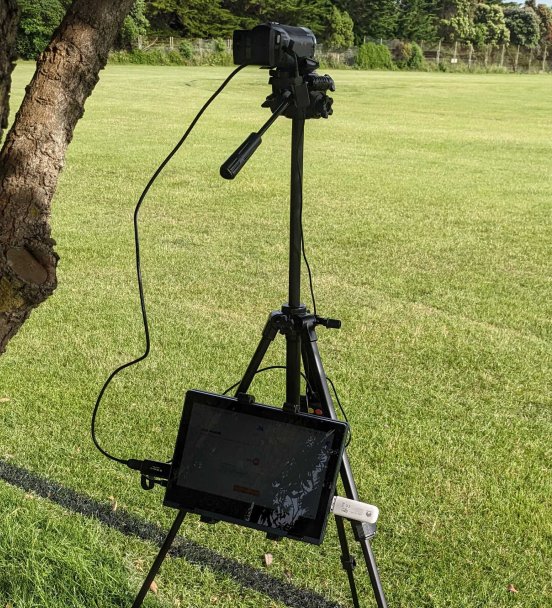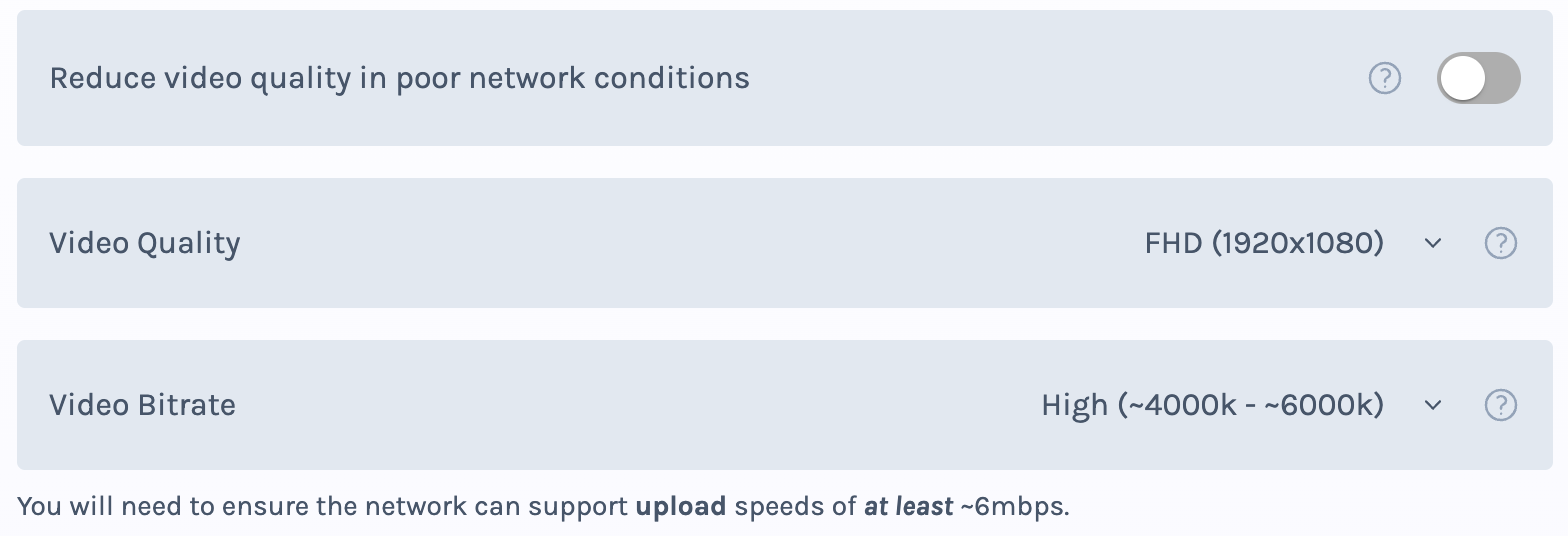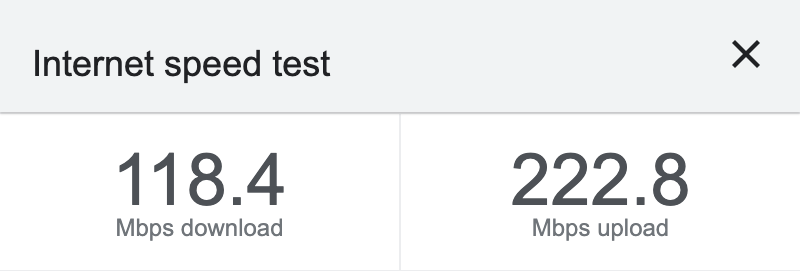Neither Firefox nor Android web browsers are presently supported for streaming video.
More computing power, strong networks, and better quality cameras will always produce better looking results. Unfortunately, throwing more resources at your streaming setup will cost more front-up capital and require more electrical/battery power to operate. We recommend using Chromebooks and plugging in a camcorder using a USB HDMI capture card at the entry-level as this usually provides a touchscreen, is cheap, easy to power, can zoom in well, and uses the Scoring application through the Chrome web browser (which we use internally for testing and building).
However, if you already have a spare laptop, camera, or you're happy to stream off your phone, then you have everything you need to get going - and we recommend using equipment and technology you are already familiar with and know works before investing in more sophisticated hardware outlays.
The "perfect" answer for a balance of "good" vs. "cheap" will be quite subjective and dependent on the sport and the amount of motion involved (and how sophisticated you'd like your broadcast to be). For example, modern smartphones have excellent cameras for still photography, but don't usually zoom in very well (or easily), so high action sport can be much harder to capture. Conversely, sports where action is focussed on just one part of an arena (e.g. baseball and cricket) can benefit from effectively a fixed camera pointed at one spot and so a smartphone on a tripod is an excellent choice.
Video Stuttering & Dropped Frames
If your video is suffering from significant slowdown and not producing a smooth video output, the most likely culprit will be your internet connection.
The MAS Scoring application will try and adjust the image quality down in poor network conditions. The raw video feed coming off your camera will likely be much bigger and better quality than 1080P and what the internet connection could stream. The MAS application will perform a process known as compression to reduce the quality and the more MAS does this, the higher the strain will be on your device.
Devices with limited computing resources, such as low-end and older laptops and Android devices will not be able to capture and stream video fast enough - so it is worth testing your device before you wish to go live if you are worried about it.
Overriding Compression
You can override this automatic network/video-quality compressor either permanently in your account/device management dialog, or on a per-match basis by opening the match settings dialog.
Toggle the setting Reduce video quality in poor network conditions to off. When left on the system will perform regular checks on the state of your device's connection to the internet - in regular 30s intervals it may adjust the image quality up or down in response to (detected) changes in the network.
It is recommended to just keep this turned on, you should really only do this as a last resort or if you need/want to guarantee a consistent viewing experience for your users. By controlling this yourself, you may worsen frame-drops/stuttering.
The rule of thumb here:
-
Video Quality
FHD (1920x1080), Video BitrateHigh (~4000k - ~6000k)will produce a good picture, but puts more strain on the network and is easier for your device. -
Video Quality
HD (1280x720), Video BitrateHigh (~1500k - ~3000k)will produce an OK picture, but lessens the strain on the network and is harder for your device (more battery/hardware required).
Consider dropping the video quality to try and take the pressure of the internet connection - meaning a better chance of a smooth video.
The Compression Trade-off
This part is just presented for interest and discusses some complicated theory.
The relationship between video quality and network performance is a bit counter-intuitive and you will need to pay mind to it when streaming in areas of poor network quality, or on devices that are a bit cheaper and poorer-specced.
When you reduce video quality (i.e. compress it more), your device needs to do more work. Intuitively you may think that reducing the video size would make things easier and work better - however, your device has to work harder to make a big picture coming off your video camera smaller. On low-powered hardware in particular (cheaper/older laptops and phones and devices with poorly-specced graphics chips), this can lead to more video stuttering as your device strains to compress the video - and drains more battery to do it.
MAS tries to assume sensible defaults, but is not a perfect system and thus why it may actually be better to try and stream in 1920x1080 with a high bitrate and put more of the heavy lifting on the network. You will likely still experience some stuttering if the network is also constrained but may have a better outcome on average - and the video will become eventually consistent allowing for replays and delayed coverage to look fine - although still potentially frustrating for live-viewers.
Poor Image Quality
The MAS Scoring application will limit itself to a best-case 1920x1080 at 30 frames-per-second. To further help reduce the amount of data sent over the network, the system reduces the video quality to 6000kbps. However, this produces a "flat" looking image where certain colours and lighting is (heavily) compressed.
If you don't like the look of this, you should check out the guide on streaming with software that gives you more control over the picture quality.
Internet Connection
You should also make sure that your connected streaming device has sufficient upload speed. Your broadband/cell provider may restrict your upload speed - even (sometimes, especially) if you have an unlimited data cap. Consider running a speed test on the device you intend to stream with in a real-world environment (i.e. not at home/office).
To stream consistently the minimum you will need to be getting is ~1.5mbps upload speed. This includes networked cameras - make sure the network the camera is on can reliably achieve this and is also not being thwarted by a local firewall. Internet providers can be fickle about uploading large amounts of data so check with your (mobile) broadband operating and the details of your data plan (especially "fair use" agreements).
If you are confident that your internet speeds are fine and you have not breached a data cap, you may wish to look at picking a MAS server physically closer to you.
Device Sleeping & Battery Usage
Batteries drain much faster when capturing video and streaming that video, especially if the screen needs to be kept on to prevent the device from automatically "sleeping". On many devices, the screen turning off and the device going to sleep will also turn the camera off.
Please make sure your device is well charged and/or able to plug into a battery pack/wall charger where possible. If using a laptop, or anything bigger than a smartphone, please check the wattage of any battery pack - small battery packs will likely not provide sufficient power to keep the device charged.
Consider a larger battery pack for long-form sports .
Can't See/Find/Select Camera
Common issues with camera access usually revolve around the device blocking permissions to use camera (see these steps). If using a plugged in camera, please check for loose cables or try restarting/refreshing the app and/or your device.
Finally, try rebooting your device and ensure it has sufficient power if problems persist - sometimes your device will lock the camera in another application or make it unavailable in low-power modes.
Networked Cameras
The Scoring application does not perform any check to determine if your network camera is actually online. If you are trying to use an internet capable camera, like a PTZ/RTMP camera then you will need to make sure that it has a stable internet connection (in particular, firewalls can cause unexpected behaviour) and that you have set its RTMP output to the value set for it in the platform.
If you are seeing a broken or outdated image for the camera in the platform settings, please check the above and/or reach out to our support team directly to see if we can help you debug and diagnose any issues with it.
Refreshing the App/Website
Sometimes the best remedy is to reload the current page and try again. If you are streaming a game, you will need to rejoin and re-latch your camera, but it is often the fastest way to fix problems.
This will flush the A/V sources attached to your device. If you have been streaming a long time, or doing lots of back-to-back matches this may help with any app slowdown.
iOS
Most pages within the App support pull-to-refresh, but you can also:
-
On a device with Face ID: Swipe up from the bottom of the phone/tablet and pause in the center of the screen.
-
On a device with a Home button: Double-click the Home button.
Swipe the app away/upwards towards the top of the screen.
Android
Most pages within the App support pull-to-refresh, but you can also:
-
On a device without home buttons: Swipe up from the bottom of your device, hold the app momentarily, then let go.
-
On a device with home buttons: Tap the Recent App button (usually on the right with a or icon).
Swipe up on the app towards the top of the screen.




